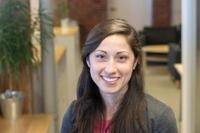I teach biology to students who recently immigrated to the United States and are just learning English. It feels like a Sisyphean task -- teaching biology, a science loaded with complex vocabulary such as mitosis, protein synthesis, replication, cohesion, ecosystem, commensalism... the list goes on -- to students who are just learning how to say "tree" and "sun" in English and how to hear the difference between the long "e" and short "i" vowel sounds. The challenge doesn't stop there. At the end of the year, my students take the standardized state test for biology that assesses their ability to recall vocab-laden details, such as the differences between archaebacteria and protista.
Is this an insurmountable challenge? I see this as an opportunity to learn more and then work to make sensible policy-level changes, in this case this means changing the policies that define a credit-bearing science course and the policies that affect the content and structure of the end-of-year exam for ELLs.
As teachers, we have an invaluable vantage point on how policies impact students. Here are five strategies to help you advocate for better education policies:
Strategy 1: Go to the source who knows.
This source could be your district office or the state department of education. The more I learned about the state biology test, the more I wanted to know how to fix it. I called the state department of education and spoke with the head of assessment and the head of science curriculum. Both were more than willing to talk with a teacher interested in learning how to help improve the quality of the exam, and recommended that I apply for a summer institute where teachers vet a new set of test questions. At that institute, I learned how test questions are piloted, vetted, and approved. Importantly, I also found out that the biology standards are up for revision in 2016. This means that there is opportunity between now and then for teachers to recommend revisions.
Strategy 2: Be stubborn and creative in your search for solutions.
Too often, we think that a fix to the problem is impossible. There's not enough funding or we don't have the power to effect change. That's because we assume constraints are there that may not actually exist. We need to question our assumptions and the assumptions of others. In one of his TED talks, Sir Ken Robinson compares the divergent thinking of adults and children: If we ask adults how many uses there are for a paper clip, we get a handful of predictable answers from picking locks to organizing papers. If we ask children, they're likely to imagine a 200ft-tall paper clip made of foam rubber. We need to keep coming up with creative new answers to the challenges facing students. As Rick Hess describes in his book The Cage-Busting Teacher, it's a strategy with proven results.
Strategy 3: Use data and concrete examples to move from "I think" to "I know."
Recently, I went with a group of teachers to talk with U.S. senators and representatives in Washington, D.C. about student-centered policy changes. One teacher had given her students a short survey on how standardized testing impacts classroom instruction. The students reported that classes with an end-of-year assessment were more rigorous. That one data point got Congressional staffers to listen more closely and ask questions.
Strategy 4: Search out other viewpoints.
At a recent Teacher2Teacher conference, I learned about GE engineers redesigning an MRI machine by looking at a hospital room from a child's perspective. The result: Instead of children being so terrified of the MRI that they needed to be sedated, they were now asking if they could come back and try the machine again tomorrow. This strategy of looking at a problem from a wholly different perspective also works in education. A top advisor to Secretary Arne Duncan told me that what he really appreciated about a roundtable conversation with Teach Plus teachers that I participated in was that all of us had different viewpoints. It is these differences that help make policies stronger. My classroom experience is important, but inherently limited. My ideas get stronger when I seek out different, even contradictory perspectives.
Strategy 5: Apply the WH questions to dig deeper.
Ask yourself who, what, when, where, why, and how: "For whom is this true?" "When is this the case?" "Who would benefit?" "What would it take to achieve x?" And: "Who do I need to talk with to help me answer these questions?" As teachers, we use these questions to encourage our students' critical thinking skills and to improve our instruction. There is tremendous diversity in student needs, teacher experience, and classroom structure. The more questions we ask, the more we talk with more teachers, students, parents, and school leaders, the likelier we are to come up with policy solutions.
As classroom teachers working with students, we see clearly when policies have unintended consequences. These five strategies help provide a starting point for teachers to begin fixing the system-level problems we encounter. This way, even when a problem seems insurmountable for one teacher to change, we can do something to make change happen.
Alexandra Fuentes is a 9th and 10th grade ELL biology teacher and a Teacher-in-Residence with Tech Plus. She is an alumna of the Teach Plus Teaching Policy Fellowship and a Knowles Science Teaching Foundation Senior Fellow.
